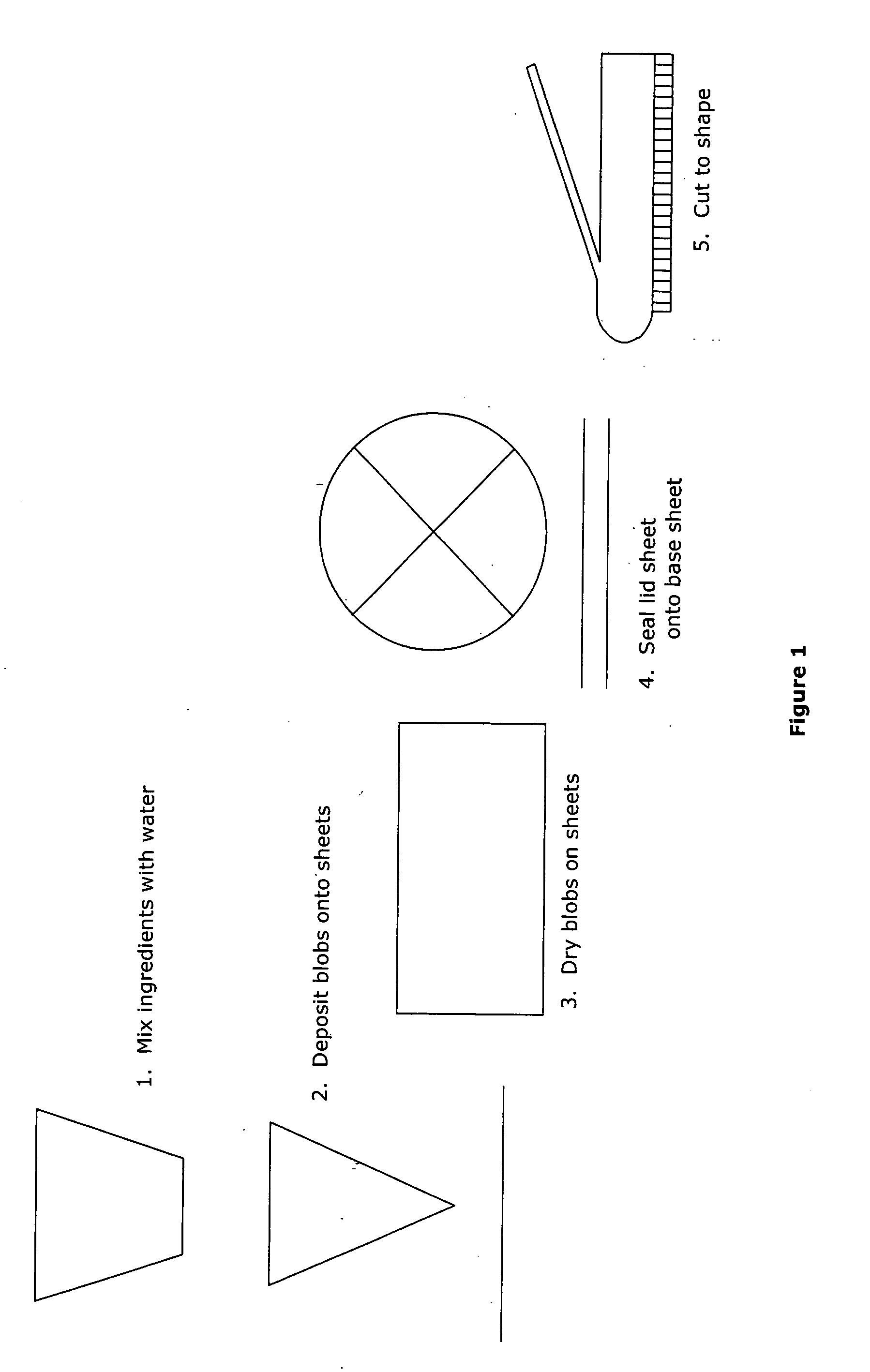Water soluble anesthetic in an oral patch of hydrophilic gums
a hydrophilic gum and anesthetic technology, applied in the field of hydrophilic gum water soluble anesthetic in an oral patch, can solve the problems of poorly working of benzocaine in a patch, and achieve the effects of convenient replacement, convenient use, and convenient removal for talking
- Summary
- Abstract
- Description
- Claims
- Application Information
AI Technical Summary
Benefits of technology
Problems solved by technology
Method used
Image
Examples
Embodiment Construction
[0011]FIGS. 2 and 3 show an adhesive hydrophilic oral patch. It may be provided dry and hard with a shape like FIG. 3 or partially hydrated and soft with a shape like FIG. 2 or between these conditions. It can be prevented from becoming dry and hard by including a non-evaporating liquid as a plastcizer such as natural molecules of glycerin or propylene glycol or synthetic molecules of dibutyl sebacate, triethyl citrate, triacetin, acetylated monoglycerides, dibutyl phthalate, butyl phthalyl butyl glycolate, butyl stearate, diphenyl phthalate, dicyclohexyl phthalate, cresyldiphenyl phosphate, or benzyl phthalate. When soft, the patch has a feel and texture like gummy candies. The preferred shape is a thin lentil which may be nearly flat on one side as shown in FIGS. 2 and 3.
[0012] Hydrophilic gum ingredients that have been tested and found to work well include gelatin, carrageenan (preferably kappa), xanthan gum combined with konjac gum, agar, starch, including corn starch and potat...
PUM
 Login to View More
Login to View More Abstract
Description
Claims
Application Information
 Login to View More
Login to View More - R&D
- Intellectual Property
- Life Sciences
- Materials
- Tech Scout
- Unparalleled Data Quality
- Higher Quality Content
- 60% Fewer Hallucinations
Browse by: Latest US Patents, China's latest patents, Technical Efficacy Thesaurus, Application Domain, Technology Topic, Popular Technical Reports.
© 2025 PatSnap. All rights reserved.Legal|Privacy policy|Modern Slavery Act Transparency Statement|Sitemap|About US| Contact US: help@patsnap.com


